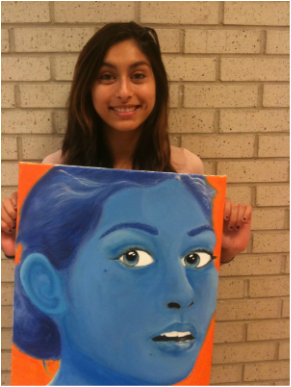
Monochromatic Acrylic Painting
This project is designed to build upon technical skills with acrylic paint and color theory. The object is to use only one color and its tints and shades to create a carefully rendered and realistic image. Strive to achieve a full value range and a careful balance of light and dark throughout the entire composition. Remember that colors have temperatures and can convey certain moods or emotions; pick a color that will match well with your chosen image and the intended meaning/feeling of the piece.
Procedures
This project is designed to build upon technical skills with acrylic paint and color theory. The object is to use only one color and its tints and shades to create a carefully rendered and realistic image. Strive to achieve a full value range and a careful balance of light and dark throughout the entire composition. Remember that colors have temperatures and can convey certain moods or emotions; pick a color that will match well with your chosen image and the intended meaning/feeling of the piece.
Procedures
- Choose an original image (not copyrighted or from the internet) that is heavily cropped (zoomed in on a subject) and contains a good amount of value. Portrait or still life images are heavily encouraged.
- Your painting will be painted on 14”x18” or larger canvas or canvas panel.
- Begin by sketching out the image lightly on the canvas. You may use gridding to help you blow up the image if working from a photograph. Remember to consider composition and fill the entire canvas – not just an object floating on the page.
